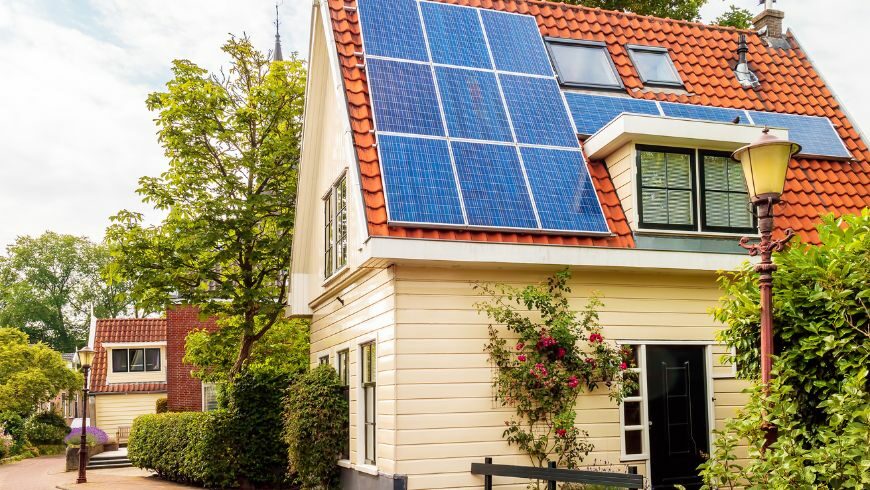Have you ever thought about how your daily habits impact the planet? It’s a big question, but the answer can start with small steps. This article will explore practical ways to reduce your carbon footprint in everyday life. From your morning commute to the way you shop, each choice matters. Reducing your carbon footprint isn’t just good for the earth; it’s a journey towards a sustainable future for everyone. Let’s discover how you can make a difference, one step at a time.
Transportation: Choosing Eco-Friendly Options
Every day, how you travel to work, school, or the grocery store impacts your carbon footprint. By making smarter choices in transportation, you can play a significant role in reducing harmful emissions. For short trips, leave the car at home. Walking or biking reduces emissions and is also great for your health. These simple changes can make a big difference over time.

When walking or biking isn’t feasible, consider carpooling or public transport. Sharing rides or using buses and trains reduces the number of vehicles on the road, leading to lower overall emissions. In addition, don’t neglect reducing your carbon footprint while on the road. Simple things like planning efficient routes and going for sustainable accommodation can go a long way.
If driving is unavoidable, consider shifting to electric or hybrid vehicles. These cars produce fewer emissions than traditional gasoline-powered vehicles, making them a more environmentally friendly choice. By adopting these transportation habits, you’re not just getting from point A to point B; you’re helping to pave the way for a cleaner, greener planet.
At Home: Energy Efficiency and Conservation
Your home is a hub of daily activity and a place where you can greatly impact your carbon footprint. You can reduce emissions and save money by focusing on energy efficiency and conservation. You can start by replacing old light bulbs with LED ones. LEDs use less energy and last longer, reducing energy bills and waste. When it’s time to replace appliances, choose energy-efficient models. Look for the Energy Star label — it signifies lower energy use.

Something that might also slip our minds is reducing our digital carbon footprint. The information we send and store uses up energy and increases CO2 levels. Consider periodical cleanups of devices, be it files or apps. Along with this, don’t be in a constant rush to upgrade your device with every new release. A 3-year-old phone can be as efficient as a brand-new one. As a bonus, this practice also leads to less physical trash and pollution.
Think twice before turning on the tap at full power. Most of the time, less water can still do the job. Also, consider keeping your home warm in winter and cool in summer by improving insulation. Seal windows and doors to prevent energy loss. Making these changes at home is a straightforward way to contribute to a healthier planet while reducing energy bills. It’s a win-win for you and the environment.
Diet and Food Choices: Eating for the Planet
What you eat has a significant impact on your carbon footprint. Without a doubt, making conscious choices about your diet can lead to a healthier planet. So, to start, opt for local and seasonal fruits and vegetables. Transporting food over long distances adds to carbon emissions. Local produce cuts down on this. It also has a positive impact on the economy.

Meat production, particularly beef and lamb, has a high carbon footprint. By eating less meat, you can significantly reduce your impact. Concerning fish and seafood, make a habit of reading the labels. Look for sustainably sourced products. Not all food was created equal. Even some veggies and plants can be very harmful to the environment. If you’re considering adopting a green diet, make informed choices. Some can end up being as taxing for our resources as meat. Additionally, be mindful of how much food you buy and how you use it. Reducing waste not only helps the environment but also saves you money.
How to Reduce Your Carbon Footprint in Daily Life Activities: Shopping and Consumption
How we shop and what we buy plays a big role in our environmental impact. Mindful purchasing can significantly reduce your carbon footprint. Here are some strategies to shop more sustainably:
- Buying Products with Minimal Packaging: choose products with less packaging. Excessive packaging often ends up as waste and contributes to environmental pollution.
- Choosing Items Made from Sustainable Materials: look for products made from sustainable, eco-friendly materials. These products have a smaller environmental impact compared to conventional materials.
- Supporting Brands Committed to Reducing Emissions: purchase from brands and companies that are transparent about their carbon footprint and are actively working to reduce it.

Understanding Carbon vs Ecological Footprint
Reducing our carbon and ecological footprint are usually mentioned when we talk about our impact on the planet. Though related, they have different meanings.
- Ecological Footprint: This is about our overall demand for Earth’s resources. It measures how much land and water we need to produce the resources we use and absorb the waste we create. That includes everything from the space for our homes and cities to the land for growing our food and the forests that absorb our carbon emissions.
- Carbon Footprint: This term zooms in specifically on our impact on climate change. It measures the total greenhouse gases we emit, mainly carbon dioxide, through activities like driving cars, using electricity, and the production of goods. It’s a focused way of looking at how our lifestyle contributes to global warming.
Takeaway
In this journey to reduce your carbon footprint, every small step counts. We’ve explored various ways, from changing daily habits in transportation and home energy use to making conscious decisions about food, shopping, waste reduction, and community involvement. As you implement these changes, remember that your efforts contribute to a larger goal – a healthier, more sustainable world. You become part of a global movement towards environmental responsibility by taking action. Ultimately, reducing your carbon footprint is not just a personal achievement. It’s a responsibility to the planet.

Author bio: Alex Silvano is a blog writer and a passionate environmental advocate who writes extensively on sustainability and green living. Collaborating with Interstate Relocation, Alex combines expertise in the moving industry with a commitment to eco-friendly practices. She aims to inspire others to make sustainable choices, even while moving.
Cover image: photo by Grant Durr via Unsplash




